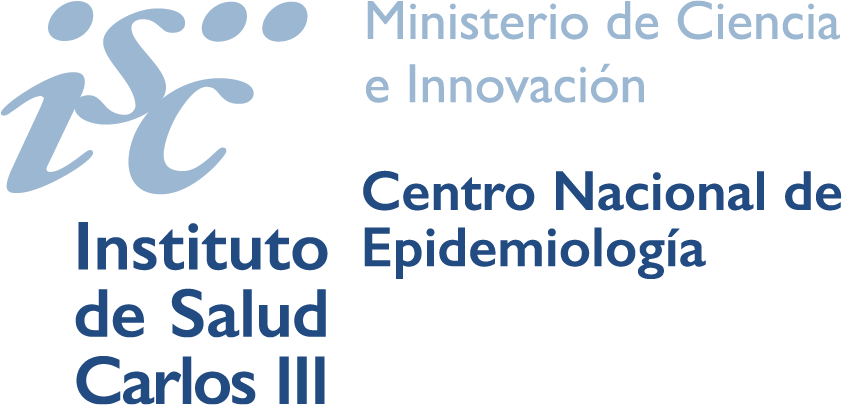Sensitivity analysis of the botulism surveillance system in Spain between 1997 and 2019
Keywords:
botulism; epidemiological surveillance; capture-recaptureAbstract
Introduction: botulism is a low-incidence but severe disease able to cause outbreaks. Autonomous Provinces and Cities notify possible, probable and confirmed cases to the National Epidemiological Surveillance Network (RENAVE by its acronym in Spanish), managed by the National Centre for Epidemiology (CNE in Spanish). The aim of this study was assess the sensitivity of the botulism (food-borne, infant and wound related) surveillance system.
Method: the capture-recapture methodology was employed using as sources of information all cases in the RENAVE database and those cases in the Minimum Basic Data Set (CMBD by its acronym in Spanish) with botulism as the main diagnosis. Due to methodological changes in the CMBD, study period was divided into two parts: 1997-2015 and 2016-2019. Matched cases were identified using common variables: date of birth, sex and date and province of hospitalisation. Total number of cases was calculated by using Chapman-Seber method. Cases included in the CMBD but missing from the RENAVE were analysed in a complementary study using information from other sources.
Results: RENAVE sensitivity was 64,4% and 78,7% for food-borne botulism each period, being lower than that achieved by CMBD. For infant botulism, RENAVE was more sensitive than CMBD in the second period, reaching a level close to 90%. No woud-related cases were identified in RENAVE.
Conclusions: The sensitivity of RENAVE increased during the second period although individualised reporting cases needs to be strengthened to reduce case loss.
Downloads
References
Centro Nacional de Epidemiología. Instituto de Salud Carlos III. Protocolo de vigilancia de Botulismo. Protocolos de la Red Nacional de Vigilancia Epidemiológica (RENAVE). [Internet]. 2022. Available from: https://www.isciii.es/QueHacemos/Servicios/VigilanciaSaludPublicaRENAVE/EnfermedadesTransmisibles/Documents/PROTOCOLOS/Protocolo%20Vigilancia%20botulismo_RENAVE_v1.pdf
Chertow DS, Tan ET, Maslanka SE, Schulte J, Bresnitz EA, Weisman RS, et al. Botulism in 4 Adults Following Cosmetic Injections With an Unlicensed, Highly Concentrated Botulinum Preparation. JAMA [Internet]. 2006 Nov 22 [cited 2021 Dec 13];296(20):2476. Available from: http://jama.jamanetwork.com/article.aspx?doi=10.1001/jama.296.20.2476
Arnon SS, Schechter R, Inglesby TV, Henderson DA, Bartlett JG, Ascher MS, et al. Botulinum Toxin as a Biological Weapon: Medical and Public Health Management. JAMA [Internet]. 2001 Feb 28 [cited 2021 Oct 13];285(8):1059. Available from: http://jama.jamanetwork.com/article.aspx?doi=10.1001/jama.285.8.1059
Centro, Nacional de Epidemiología. Instituto de Salud Carlos III. Informe epidemiológico sobre la situación del Botulismo en España. Años 2019 y 2020 [Internet]. 2022. Available from: https://www.isciii.es/QueHacemos/Servicios/VigilanciaSaludPublicaRENAVE/EnfermedadesTransmisibles/Documents/archivos%20A-Z/Botulismo/Informe%202019_2020_Botulismo_final.pdf
European Centre for Disease Prevention and Control. Botulism. In: ECDC. Annual Epidemiological Report for 2020 [Internet]. Stockholm: ECDC; 2023. Available from: https://www.ecdc.europa.eu/sites/default/files/documents/botulism-annual-epidemiological-report-2020.pdf
World Health Organization. Botulism [Internet]. 2018 [cited 2021 Dec 15]. Available from: https://www.who.int/news-room/fact-sheets/detail/botulism
Lonati D, Schicchi A, Crevani M, Buscaglia E, Scaravaggi G, Maida F, et al. Foodborne Botulism: Clinical Diagnosis and Medical Treatment. Toxins (Basel). 2020 Aug 7;12(8):E509.
Thirunavukkarasu N, Johnson E, Pillai S, Hodge D, Stanker L, Wentz T, et al. Botulinum Neurotoxin Detection Methods for Public Health Response and Surveillance. Frontiers in Bioengineering and Biotechnology [Internet]. 2018 [cited 2022 Feb 25];6. Available from: https://www.frontiersin.org/article/10.3389/fbioe.2018.00080
Rasetti-Escargueil C, Lemichez E, Popoff MR. Toxemia in Human Naturally Acquired Botulism. Toxins (Basel). 2020 Nov 13;12(11):E716.
Peñuelas M, Guerrero-Vadillo M, Valdezate S, Zamora MJ, Leon-Gomez I, Flores-Cuéllar Á, et al. Botulism in Spain: Epidemiology and Outcomes of Antitoxin Treatment, 1997-2019. Toxins (Basel). 2022 Dec 20;15(1):2.
Ministerio de Sanidad y Consumo. Real Decreto 2210/1995, de 28 de diciembre, por el que se crea la red nacional de vigilancia epidemiológica [Internet]. Sect. 1, Real Decreto 2210/1995 Jan 24, 1996 p. 2153–8. Available from: https://www.boe.es/eli/es/rd/1995/12/28/2210
Real Decreto 69/2015, de 6 de febrero, por el que se regula el Registro de Actividad de Atención Sanitaria Especializada. [Internet]. Available from: https://www.sanidad.gob.es/estadEstudios/estadisticas/docs/BOE_RD_69_2015_RAE_CMBD.pdf
García-Pelayo R. A Bayesian, combinatorial approach to capture–recapture. Theoretical Population Biology [Internet]. 2006 Nov [cited 2022 Feb 7];70(3):336–51. Available from: https://linkinghub.elsevier.com/retrieve/pii/S0040580906000815
European Centre for Disease Prevention and Control. Botulism. In: ECDC Annual epidemiological report for 2015 [Internet]. Stockholm: ECDC; 2018. Available from: https://www.ecdc.europa.eu/en/publications-data/botulism-annual-epidemiological-report-2015
Downloads
Published
How to Cite
Issue
Section
License
Copyright (c) 2023 Marina Peñuelas, María Guerrero-Vadillo, Oliva Díaz-García, David García-García, Carmen Varela

This work is licensed under a Creative Commons Attribution-NonCommercial-ShareAlike 4.0 International License.
El material creado por un autor puede ser distribuido, copiado y exhibido por terceros si se hace referencia a la autoría. No se puede obtener ningún beneficio comercial y las obras derivadas tienen que estar bajo los mismos términos de licencia que el trabajo original


